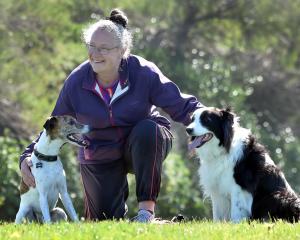Earlier this year, the number of infected cattle herds in Otago was officially zero, although there were two infected deer herds in Central Otago.
Yesterday, Ospri South Island relationships manager Danny Templeman said all possible sources of the infectious disease were being explored and measures introduced to reduce the risk to cattle and deer herds in the area.
Slaughter and routine Tb testing identified the three herds, which were understood to comprise both cattle and deer.
Possums and ferrets were the main carriers of the disease.
As well as investigating the source of the infection, Ospri was taking ''immediate action'' to manage and control the disease on the properties, Mr Templeman said.
An initial possum control operation was due to begin next week and the public were asked to heed warning signs if they were in the area.
Possum carcasses would be recovered and autopsies performed to help determine the source of the disease.
It was important to get the possum surveillance completed quickly to provide information to herd owners in the area.
Mr Templeman would not comment on the specific details of the herds.
Further information on the herds was being gathered and on the disease status of wildlife surrounding the properties.
Since the disease hit high levels in the 1990s, a huge effort has been put into controlling it, with about $1.2 billion spent over the past 15 years.
In 1998, there were 306 infected herds in Otago and 1700 nationally.
The national infected herds figure earlier this year was 41.
Mr Templeman said the potential for Tb infection was not unexpected, although the latest confirmation of the disease was ''certainly disappointing''.
Ospri's Tbfree programme would be doing its best to control the outbreak and make sure infected herd numbers were reduced.
It was probably a good reminder the disease was still present and everyone needed to remain vigilant, he said.
TBfree Otago committee chairman Ross Wilson, of Omakau, said an infected herd placed stress on the owner, with financial costs and disruptions to farm-management routines, often for a year or more while the disease was eliminated from the herd.
''It is never pleasant to find Tb in your herd and this case is a reminder that the disease still poses a threat to farmed cattle and deer in the region,'' Mr Wilson said.
There was always the likelihood that it could be found and it was disappointing that it was in ''one little area'', he said.
Where the risk of Tb infection was particularly high, movement-control areas were in place to ensure certain conditions, such as pre-movement testing, were met before stock is moved.
The latest infected herds were found just outside a movement-control area, he said.











